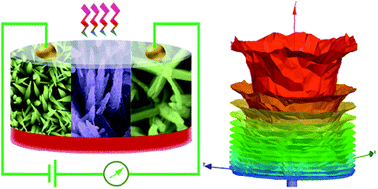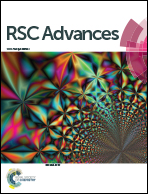Spontaneous hyper-branching in ZnO nanostructures: morphology dependent electron emission and light detection†
Abstract
Higher dimensional ZnO nanoforms offer unprecedented advantages over their low dimensional counterparts in emerging technologies. This motivated the researchers to design ZnO hierarchical architectures which are expected to offer performances improved to device benchmarks. Starting from 1D ZnO nanospike arrays, hierarchical cactus and tree-like ZnO arrays with increasing branching and complexities have been grown via a simple wet chemical approach in ambient conditions. The zero thermal budget, large area of fabrication and absence of any structure-directing agents are the novel highlights of the current synthesis protocol. Cathodoluminescence spectroscopic investigation reveals a gradual increment in defect constitution in these nanoforms with increasing structural complexity. The synthesized nanostructure arrays display promise in electron field emission owing to their structural uniqueness as indicated by field distribution calculations using ANSYS electromagnetic software. Furthermore, these higher order nanostructures are capable of detecting UV light with photocurrent gains as high as 2.21 × 104.


 Please wait while we load your content...
Please wait while we load your content...